Tungsten Mine at Wolframite Mountain (Pasayten Wilderness)
During my recent four day backpacking trip in the Pasayten Wilderness with Brett, Tim and Bill we visited an old Tungsten mine on Wolframite Mountain. The location is extremely remote (30 miles from Winthrop) so it was amazing to see the array of machinery present at the mine. While walking up the trail to the mine, we found lots of iron pipe which appears to have been used to supply the mine workers and machinery with water. I was astounded at the scale of the workings – everything on site (with the exception of wood) was hauled in via. pack trains taking many days to reach the location.
On returning to Redmond, I was curious to learn more about the mine.
I sent an email to the local Shafer Museum in Winthrop and they were kind enough to send me a reference to the book Discovering Washington’s Historic Mines vol 3: The Northern Cascades along with some background material on the mine. The book provides a fascinating insight into the scale of mining operations in the local area. Thanks also to Marcy Stamper for additional information.
Had we known much about Tungsten, the names Wolframite Mountain and Scheelite Pass should have been a clear giveaway that we were approaching the mine location.
Wolframite and Scheelite are the ores that contain the metal Tungsten. The initial mineral deposits in the region were discovered by the international border survey of 1898 but development and establishment of claims did not follow until 1906. I assume this was due to the remoteness of the location (it took us two days to hike in!).
Mines around Wolframite Mountain were the only mines to produce any substantial results in the Pasayten Wilderness. Despite this the remote location and angle of the ore veins made production quite slim and very costly.
This mine, the largest of the Pasayten claims, was referred to as Tungsten Mine or Boundary Mine. It opened in 1908 and was improved during 1915 through 1918. In 1915 a snow road was constructed so machinary could be brought to the mine (elevation 6750′) – the snow was 20′ deep in places!
By 1920, the mine had produced six carloads of hand sorted ore, many of which were shipped to Germany for use in munitions (as a steel hardener). The original mine buildings were destroyed in a forest fire in 1930 and were later rebuild in 1936 when the mine reported a record shipment of 30 tons (produced at a loss). A newer ten-ton per day concentrator was added in the early 1940’s which allowed the mine to produce some 300 ton’s of ore concentrate. The mine subsequently closed presumably due to financial loss where the price of tungsten dropped from $5 to $1 per pound, after sources were found in less remote locations. A later USGS survey reported the production value of the mine was 5 to 1 (in 1971) meaning it would run at a five times loss.
At it’s peak, the mine had multiple buildings on site: a sawmill (steam driven), commissary, cookhouse, three bunk houses, office, machine shop, dining room, stable and a 1/4 mile flume which was used to carry water to the mill. All of these were build from wood found on location. All of the materials used in the mine were hauled in by horse teams including two one-ton rollers used by the ore mill. Supplies were brought in by a pack string, with 25 horses per pack, each carrying 250 pounds of supplies. The route took four days in each direction.
Laborers and muckers were paid $2.00 per day, while miners and carpenters were paid $2.75. The underground workers only had to put in eight hours, whereas the carpenters and laborers worked two extra hours each day. Still, 80 men were employed at the mine by 1916.
Today two large buildings remain – the smaller one appears to have been the cookhouse. The larger building has three rooms which would appear to be the bunk house, office and dining room building. The building appear in great shape despite there age and appear to be maintained by a group of volunteers "Friends of Tungsten Mine". Behind the buildings up a short trail is a very nice "two seater" outhouse (pilot and co-pilot style).
Below the building (about 200 – 300 yards) lie the mine workings. They are collapsed (sealed) and an array of machinery litters the landscape. The remnants of the original two-ton mill still stand as a brick structure.
Below the original mill lies the remains of the newer ten-ton ore mill which used a Humphrey’s spiral concentrator to separate materials based on weight. This operated as follows:
- The ore was first crushed using an eight-inch jaw crusher
- The resulting material was then pushed through a series of rollers with were 14" wide by x 24" diameter – this produced a coarse sand material
- The coarse sand was then passed through a vibrating screen and stored in a bin. Material which did not pass through the screen was sent back to the crusher.
- The bins of ore were then dumped in the top of Humphrey’s Spiral which was used to sort the dense ore from the quartz material.
If you’re interested in visiting the mine during a hike to Pasayten, you will find it about 1/2 mile West of the intersection of the Boundary Trail (#533) and Tungsten Creek Trail (#534). Green Trails map #20 (Coleman Peak, WA) covers the area – the mine is in section B5 of the map.
Update: Brett has published our trip journal
Sources:
Wilson, Bruce A. Late Frontier: A History of Okanogan County, Washington (1800–1941). Okanogan, Washington: Okanogan County Historical Society, 1990. p. 252.
Culver, H. E.; Broughton, W. A., 1945, Tungsten resources of Washington: Washington Division of Geology Bulletin 34, 89 p., 23 plates.
Northwest Underground Explorations, Discovering Washington’s Historic Mines Vol. 3
 Loading Image...
Loading Image...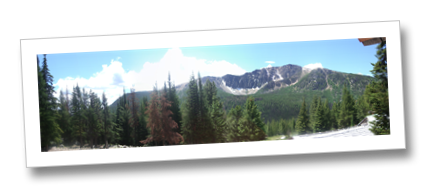
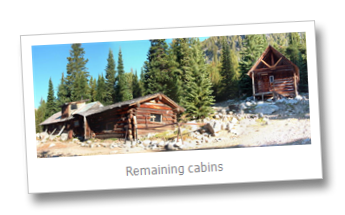
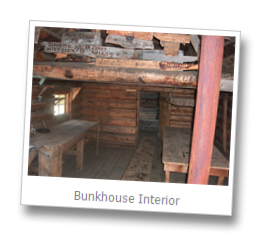
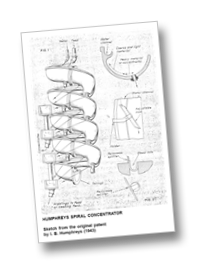
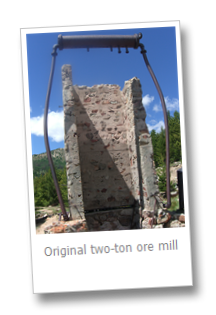
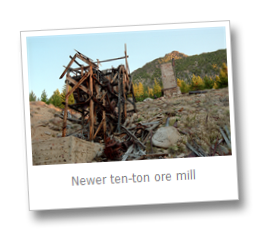
Thanks for this in-depth history – it brings light to a number of questions I had about the place that I visited during my thru hike of the PNT last summer.
This was really great to read. Thank you
tom
This is awesome!! I had been thinking bout the horse packing trips into the pasayten I had gonne on with my granfather over 18 years ago and decided to search the web for info on some of hte places we camped — and the cabins still look exacly like they do in my mind!!!
does anyone have pic of tungsten lake my email is chrisntracyanderson@hotmail.com thank so much i am going hiking there this summer and would like to check it out thanks
@chris
Sorry Chris, I don’t believe I have a picture of the lake. The pictures of our hike can be found here. This should link you to the photos starting at the old Tungsten mine camp. Tungsten lake is across the valley in the shadow of Apex and wouldn’t be super visible from the mine camp (it’s about the same height).
For a picture of Tungsten Lake (from the top of Apex) try https://www.nwhikers.net/forums/download.php?id=3969355179_8c2451471d&p=549450.
I worked at the tungsten mine the summer of 1952 and would be interested in talking to you about it. I have lots of info about it which you may find interesting. Please email your address so I can contact you.
man I would love to do some metal detecting up theretry to find some old glass insulators from telegraph if there was any or some date males are some rail road ties possibly pull a double bit axe head out of the ground has anybody ever done any of this